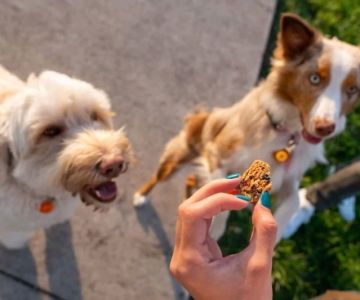1. Understanding the Importance of Socializing a Rescue Dog
Rescue dogs often come with a history of trauma, neglect, or inconsistent social experiences, which can make socializing them with other pets a delicate but vital process. Proper socialization not only promotes positive interactions but also improves the dog's emotional well-being, reducing anxiety and preventing behavioral issues.
Socializing a rescue dog with other pets helps create a balanced environment, where your dog feels secure and confident. The process strengthens trust between pets and humans, fostering a peaceful coexistence at home. Recognizing this importance early in the adjustment period can make a profound difference in long-term pet harmony.
Why Rescue Dogs May Struggle with Socialization
Many rescue dogs have experienced shelter environments, previous trauma, or insufficient social exposure. This can lead to fear, aggression, or withdrawal when faced with unfamiliar animals. Understanding these root causes helps tailor a patient and customized approach that respects the dog's emotional pace.

10645 N Tatum Blvd ste 200 454, Phoenix, AZ 85028, USA
See DetailsBenefits Beyond Behavior
Socialized dogs tend to be happier, more confident, and healthier. Positive pet interactions encourage exercise, mental stimulation, and a reduction in stress-related health problems. For families with multiple pets, early and thoughtful socialization prevents conflicts and builds a foundation of mutual respect.
2. Preparing Your Home and Pets for the Introduction
Before introducing your rescue dog to existing pets, preparation is crucial to ensure safety and reduce stress. This phase includes creating neutral meeting spaces, controlling stimuli, and mentally preparing all involved animals.
Assessing Each Pet’s Temperament
Understanding the personality and behavior history of your resident pets helps anticipate potential conflicts. Some pets may be territorial or anxious, while others are naturally welcoming. Tailoring your approach to these nuances can prevent escalations.
Creating a Neutral Territory
Introducing pets in a neutral area, such as a park or a room unfamiliar to all, reduces territorial aggression. This tactic avoids triggering possessiveness and makes first encounters less intimidating for your rescue dog.
Gathering Necessary Supplies
Prepare leashes, treats, toys, and barriers like baby gates or crates to control interactions safely. These tools allow you to intervene quickly and reinforce positive behavior with rewards.
3. Step-by-Step Guide to Socializing a Rescue Dog with Other Pets
Socialization is a gradual, multi-stage process requiring observation, patience, and positive reinforcement.
Stage 1: Scent Familiarization
Allow your rescue dog and other pets to smell each other's bedding or toys without direct contact. This builds curiosity without pressure and reduces fear during the first face-to-face meeting.
Stage 2: Controlled Visual Introduction
Use baby gates or leashes to enable pets to see but not physically reach each other. Observe their body language closely — wagging tails, relaxed postures, and soft eyes are good signs, while growling or stiff bodies indicate the need to slow down.
Stage 3: Short Supervised Meetings
Begin brief interactions under strict supervision. Keep leashes on both dogs and offer treats to reinforce calm behavior. Gradually extend the duration as pets grow more comfortable.
Stage 4: Increasing Interaction Freedom
Once pets demonstrate tolerance and friendly behavior, allow more freedom during interactions in a controlled environment. Continue rewarding positive exchanges and monitor for signs of stress or aggression.
4. Addressing Common Challenges in Pet Socialization
Even with careful planning, socialization efforts can encounter obstacles. Addressing these challenges with patience and expertise is essential.
Handling Fear and Anxiety
Rescue dogs may hide, tremble, or avoid other pets initially. Do not force interactions. Instead, use calming techniques like soft talking, gentle petting, and slow exposure. Consistency and positive experiences are key.
Dealing with Aggression
If aggression occurs, separate the animals immediately to prevent injury. Consult a professional trainer or behaviorist to assess triggers and design a behavior modification plan. Aggression often masks fear, so understanding context is vital.
Recognizing Individual Limits
Every animal has a unique social threshold. Some dogs may never fully integrate but can still live peacefully with others through careful management. Recognizing and respecting these limits preserves harmony.
5. Real-Life Case Study: Successful Socialization Story
Consider the story of Max, a two-year-old rescue dog adopted from a shelter with a history of trauma. Initially fearful and reactive toward the family's cat and older dog, Max’s integration was slow and cautious.
By following a structured socialization plan involving scent introduction, short supervised visits, and plenty of positive reinforcement, Max gradually built trust. The family used calming music, regular routines, and professional advice from Hidden Brook Veterinary to manage stress and behavior.
Within three months, Max was calmly sharing space with the cat and playing gently with the older dog. This success illustrates the power of patience and tailored strategies in socializing rescue dogs effectively.
6. Professional Support and Resources
When socializing a rescue dog with other pets, professional guidance can make a significant difference. Veterinary behaviorists, certified trainers, and specialized services offer personalized plans that address specific challenges.
Hidden Brook Veterinary provides expert consultations, training resources, and access to pet products designed to ease socialization. Their team understands the complexities rescue dogs face and offers compassionate, evidence-based support to help you build a harmonious multi-pet household.
Engaging with professionals ensures you and your pets receive the best possible care, making socialization a positive journey rather than a stressful ordeal.











